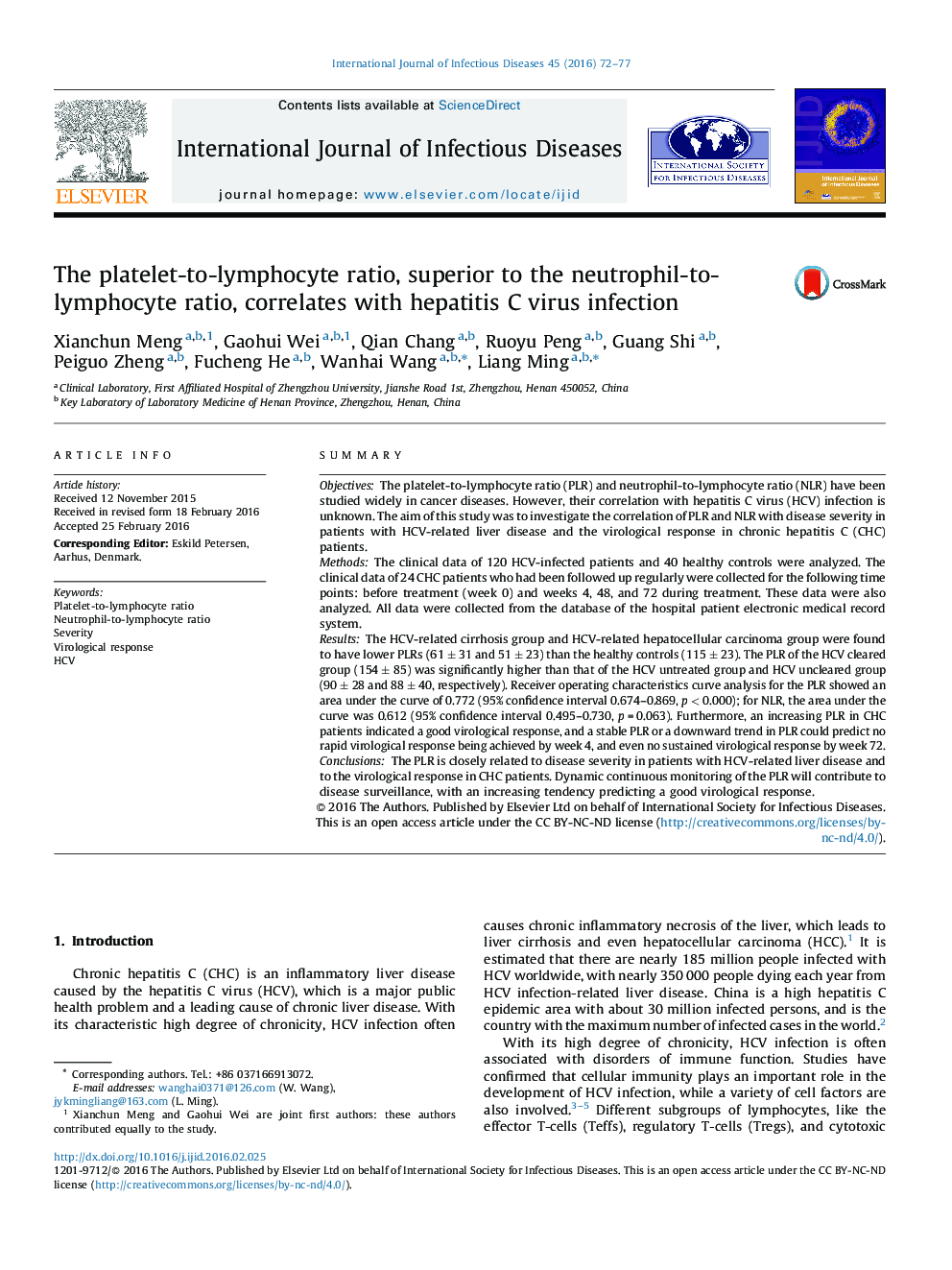| Article ID | Journal | Published Year | Pages | File Type |
|---|---|---|---|---|
| 3361756 | International Journal of Infectious Diseases | 2016 | 6 Pages |
•In this study, the correlations among the platelet-to-lymphocyte ratio (PLR) and neutrophil-to-lymphocyte ratio (NLR) and hepatitis C virus (HCV) infection-related disease and the virological response outcome in patients with HCV infection were investigated.•PLR, superior to NLR, was found to be correlated with the disease severity of HCV infection.•This study shows that dynamic continuous monitoring of PLR, rather than a single high or low PLR value at a certain time point, will contribute to disease surveillance, with an increasing tendency predicting a good virological response.
SummaryObjectivesThe platelet-to-lymphocyte ratio (PLR) and neutrophil-to-lymphocyte ratio (NLR) have been studied widely in cancer diseases. However, their correlation with hepatitis C virus (HCV) infection is unknown. The aim of this study was to investigate the correlation of PLR and NLR with disease severity in patients with HCV-related liver disease and the virological response in chronic hepatitis C (CHC) patients.MethodsThe clinical data of 120 HCV-infected patients and 40 healthy controls were analyzed. The clinical data of 24 CHC patients who had been followed up regularly were collected for the following time points: before treatment (week 0) and weeks 4, 48, and 72 during treatment. These data were also analyzed. All data were collected from the database of the hospital patient electronic medical record system.ResultsThe HCV-related cirrhosis group and HCV-related hepatocellular carcinoma group were found to have lower PLRs (61 ± 31 and 51 ± 23) than the healthy controls (115 ± 23). The PLR of the HCV cleared group (154 ± 85) was significantly higher than that of the HCV untreated group and HCV uncleared group (90 ± 28 and 88 ± 40, respectively). Receiver operating characteristics curve analysis for the PLR showed an area under the curve of 0.772 (95% confidence interval 0.674–0.869, p < 0.000); for NLR, the area under the curve was 0.612 (95% confidence interval 0.495–0.730, p = 0.063). Furthermore, an increasing PLR in CHC patients indicated a good virological response, and a stable PLR or a downward trend in PLR could predict no rapid virological response being achieved by week 4, and even no sustained virological response by week 72.ConclusionsThe PLR is closely related to disease severity in patients with HCV-related liver disease and to the virological response in CHC patients. Dynamic continuous monitoring of the PLR will contribute to disease surveillance, with an increasing tendency predicting a good virological response.
